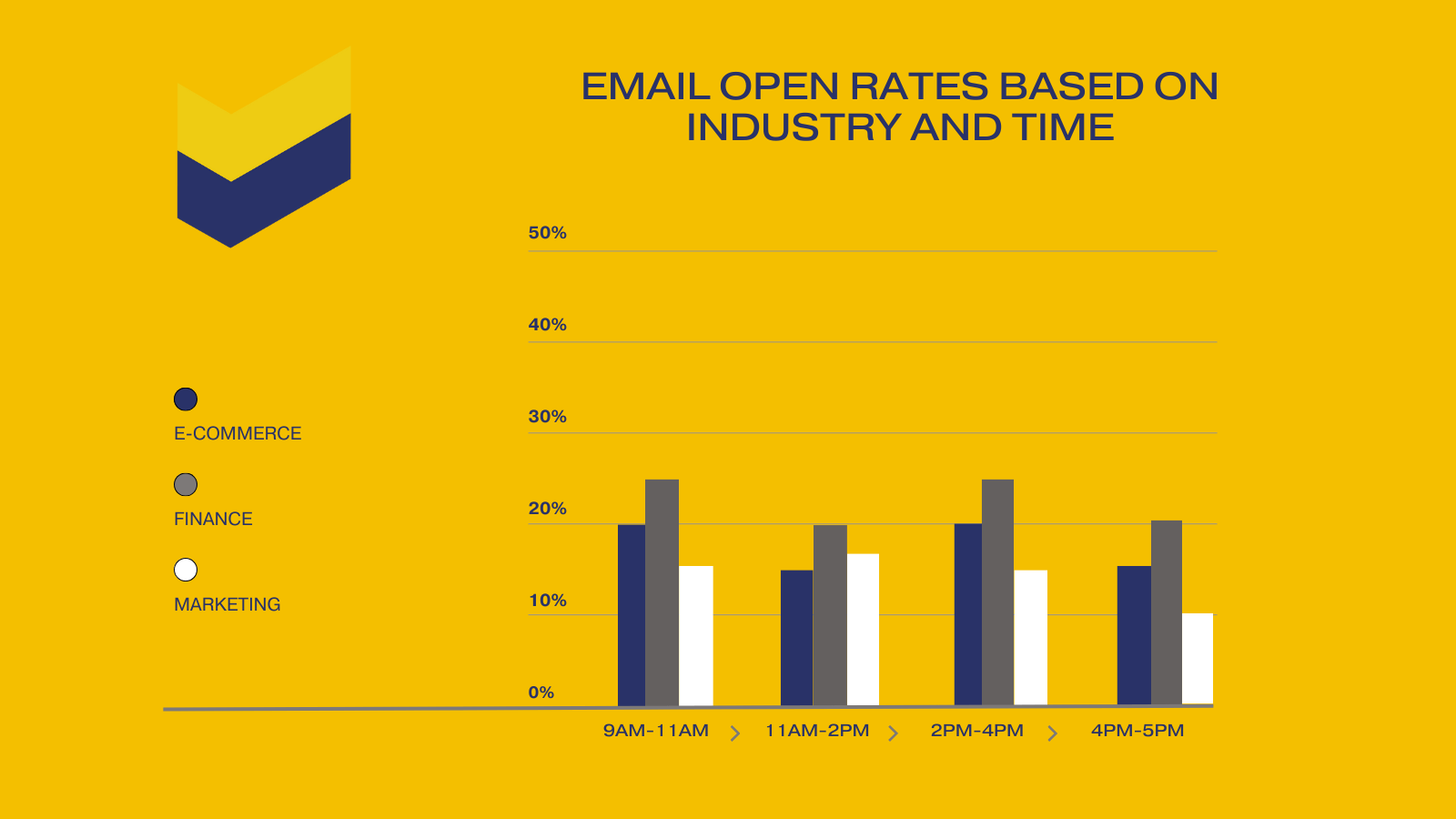
List Marketing Strategies
A well-curated list of marketing strategies serves as a beacon, guiding brands through the intricate maze of audience engagement and brand promotion. This article delves deep into the multifaceted realm of marketing, offering insights, best practices, and real-world applications for each strategy.
From understanding the core elements to exploring the advantages, disadvantages, and key considerations, this guide is a treasure trove for both budding marketers and seasoned professionals. Whether you’re looking to refine your current strategies or embark on a new marketing adventure, this article has got you covered.
Table of contents:
Understanding List Marketing Strategies
What is a marketing strategy?
At its core, a marketing strategy is a comprehensive game plan designed to achieve specific list marketing objectives.
It’s the blueprint that guides businesses, helping them target their audience effectively, differentiate from competitors, and drive growth. It’s not just about promotion; it’s about crafting a narrative that resonates.
Marketing strategy vs. marketing plan
Often, the terms ‘marketing strategy’ and ‘marketing plan’ are used interchangeably, but there’s a subtle difference worth noting.
While a marketing strategy outlines the ‘what’ and ‘why’—the goals you want to achieve and the approach to get there—a marketing plan delves into the ‘how’. It’s the tactical roadmap, detailing the steps, channels, and tools you’ll employ to execute the strategy.
Why marketing strategies matter
In the bustling marketplace, standing out is no small feat. That’s where a robust marketing strategy comes into play. It ensures that businesses don’t just shoot in the dark but make informed decisions. A well-crafted strategy:
- Enhances brand visibility and recognition.
- Drives customer engagement and loyalty.
- Optimizes resource allocation, ensuring maximum ROI.
- Provides a competitive edge, setting businesses apart.
The main elements of a marketing strategy
Diving into the anatomy of a marketing strategy, several key components emerge:
- Target Audience: Knowing who you’re speaking to is paramount. It’s about understanding their needs, preferences, and pain points.
- Unique Selling Proposition (USP): What sets your product or service apart? Your USP is the answer, highlighting the unique benefits and features.
- Pricing Strategy: It’s not just about setting a price but understanding the perceived value and positioning in the market.
- Promotional Plan: This encompasses the channels and tactics you’ll use to reach your audience, from digital ads to email campaigns.
- Distribution Plan: How will your product reach the customer? Whether it’s online sales or brick-and-mortar stores, this plan outlines the journey.
Diverse Types of Marketing Strategies
In the vast realm of the business world, it’s not just about having a product or service; it’s about how you present it to the world. And let’s be honest, in this digital age, there’s no one-size-fits-all approach.
Different businesses, different audiences, different goals—all these factors necessitate the need for a diverse range of list marketing strategies. Here, we’re going to delve into some of the most effective list marketing strategies that businesses are harnessing to make their mark.
Content Marketing
content marketing—a strategy that’s been making waves for a while now. It’s all about creating valuable, relevant content to attract and engage a defined audience.
But it’s not just about churning out content; it’s about telling a story, educating your audience, and positioning your brand as a thought leader. Some key elements include:
- Blog posts that answer common questions or provide insights.
- E-books or whitepapers that delve deep into specific topics.
- Infographics that visually represent data or information.
Social Media Marketing
In today’s interconnected world, social media is where the action is at. It’s the platform where brands can have real-time interactions with their audience, build a community, and showcase their personality.
Whether it’s the casual vibe of Instagram, the professionalism of LinkedIn, or the immediacy of Twitter, each platform offers unique advantages. Key aspects to consider:
- Crafting platform-specific content.
- Engaging with followers through comments, polls, or DMs.
- Running targeted ad campaigns to reach a broader audience.
Search Engine Optimisation (SEO)
If you’ve ever wondered how certain websites always seem to pop up at the top of search results, SEO is the magic behind it. It’s the art and science of optimizing your website so it ranks higher on search engines.
And in a world where Google processes over 3.5 billion searches per day, you can imagine its significance. Key components include:
- Keyword research to understand what your audience is searching for.
- On-page optimisation, like meta descriptions and title tags.
- Building high-quality backlinks to boost domain authority.
Email Marketing and Newsletters
Despite the rise of numerous digital channels, email remains a stalwart in the marketing toolkit. It’s personal, direct, and offers one of the highest ROIs.
From monthly newsletters to personalised product recommendations, email list marketing is all about building and nurturing relationships. Some strategies to consider:
- Segmenting your email list for more targeted campaigns.
- A/B testing to understand what resonates with your audience.
- Crafting compelling subject lines to boost open rates.
Influencer Marketing
In a world dominated by social media, influencers have emerged as new-age celebrities. Collaborating with them can offer brands a more authentic way to reach their audience.
It’s not just about follower count; it’s about engagement, trust, and alignment with brand values. Key points to ponder:
- Choosing the right influencer for your brand and audience.
- Crafting collaborative content that feels genuine.
- Measuring the impact in terms of engagement, reach, and conversions.
Earned Media and PR
Earned media is essentially the word-of-mouth in the digital age. It’s when third parties talk about your brand, be it in news articles, blogs, or reviews.
It’s organic, it’s genuine, and it’s incredibly valuable. PR, on the other hand, is about managing your brand’s reputation and image. Some strategies include:
- Crafting press releases for new product launches or company news.
- Building relationships with journalists and media houses.
- Monitoring brand mentions and addressing any negative publicity proactively.
Landing pages
Ah, the landing page—a digital storefront, if you will. It’s the place where your potential customers land after clicking on your ad or link.
But it’s not just about having a page; it’s about having a page that converts. Some key elements to consider:
- A compelling headline that grabs attention.
- Clear and concise copy that communicates the value proposition.
- A strong call-to-action that nudges the visitor to take the desired action.
Advertising
In the vast realm of list marketing strategies, advertising stands tall as a tried-and-true method. Whether it’s digital or traditional, advertising is all about putting your brand in front of the right audience at the right time. Key aspects to ponder:
- Choosing the right platform based on your target audience.
- Crafting compelling ad copy and visuals.
- Monitoring and optimising for better ROI.
Affiliate marketing
Affiliate marketing is the art of promoting other people’s products and earning a commission for every sale made through your referral. It’s a win-win, really. Brands get more sales, and affiliates earn a commission. Key points to consider:
- Choosing products that align with your audience’s interests.
- Promoting products genuinely and transparently.
- Tracking conversions and optimising strategies for better results.
Retargeting
Ever browsed a product and then seen ads for it everywhere? That’s retargeting in action. It’s about reaching out to potential customers who’ve shown interest in your product but haven’t converted yet. Some strategies include:
- Segmenting your audience based on their interaction with your site.
- Crafting personalised ads that resonate with their previous interactions.
- Monitoring and optimising for better conversion rates.
AI marketing
In this digital age, artificial intelligence is reshaping the way we approach list marketing. From chatbots to predictive analytics, AI offers a range of tools to enhance customer experience and optimise list marketing efforts. Key elements to explore:
- Implementing chatbots for 24/7 customer support.
- Using predictive analytics to forecast sales and trends.
- Personalising marketing campaigns based on user behaviour.
Offline Marketing
While the digital realm offers a plethora of opportunities, let’s not forget the power of offline marketing.
Whether it’s billboards, brochures, or events, offline marketing has its unique charm. Some strategies to consider:
- Organising events or workshops to engage with your audience.
- Crafting compelling print ads that resonate with your brand message.
- Collaborating with local businesses for mutual promotion.
Outbound Marketing
Outbound marketing is the traditional form of marketing where businesses reach out to potential customers. Think cold calls, trade shows, and seminars. Key points to ponder:
- Identifying the right audience for your outbound campaigns.
- Crafting compelling pitches that resonate with their pain points.
- Monitoring and optimising for better engagement and conversion.
Inbound Marketing
In contrast to outbound, inbound marketing is about attracting customers to come to you. It’s about creating valuable content, optimizing for search engines, and building a strong online presence. Some strategies include:
- Regularly publishing valuable content that addresses your audience’s pain points.
- Optimizing your website for search engines to attract organic traffic.
- Engaging with your audience on social media and building a community.
Content Marketing
Content marketing is all about creating and distributing valuable content to attract and engage a defined audience. It’s not just about selling; it’s about educating, entertaining, and building trust. Key elements to consider:
- Identifying the topics that resonate with your audience.
- Choosing the right format—be it blogs, videos, or podcasts.
- Promoting your content across various channels for maximum reach.
Search Engine Marketing (SEM)
While SEO focuses on organic traffic, SEM is all about paid traffic. It’s about bidding on keywords and displaying ads on search engine results pages. Key points to ponder:
- Conducting thorough keyword research to identify high-potential terms.
- Crafting compelling ad copy that stands out.
- Monitoring and optimizing for better click-through rates and conversions.
Organic Social Media Marketing
In the world of social media, organic marketing is about building and engaging with your community without paid promotions.
It’s about sharing valuable content, interacting with followers, and building a loyal fan base. Some strategies to consider:
- Regularly posting content that resonates with your audience.
- Engaging with followers through comments, polls, and DMs.
- Collaborating with influencers for a broader reach.
Paid Social Media Marketing
While organic social media focuses on community building, paid social is all about reaching a broader audience through targeted ads.
Whether it’s Facebook, Instagram, or LinkedIn, each platform offers unique advertising opportunities. Key aspects to ponder:
- Segmenting your audience for targeted campaigns.
- Crafting compelling ad copy and visuals.
- Monitoring and optimising for better ROI.
Affiliate Marketing
As mentioned earlier, affiliate marketing is about promoting products and earning a commission. But it’s worth reiterating its significance in the digital marketing landscape. Key points to consider:
- Collaborating with trusted affiliates who align with your brand values.
- Providing them with the necessary tools and resources
Advantages and Disadvantages
Navigating the vast realm of marketing can be a tad overwhelming, especially when you’re trying to pinpoint the best strategies for your brand.
But, as with most things in life, there are pros and cons to consider. Let’s dive in, shall we?
What are the advantages of list marketing strategies?
- Comprehensive Overview: Having a list of marketing strategies at your fingertips provides a holistic view of the options available. It’s like having a menu of the finest cuisines, each with its unique flavour.
- Flexibility: With a list, you can mix and match strategies based on your business needs, budget, and target audience. It’s all about finding that sweet spot.
- Efficiency: A well-structured list can serve as a roadmap, guiding you towards the most effective strategies, saving time, effort, and resources.
- Informed Decision Making: Knowledge is power, right? A list empowers you to make informed decisions, ensuring you get the best bang for your buck.
What are the disadvantages of list marketing strategies?
- Overwhelming Choices: Sometimes, having too many options can lead to analysis paralysis. It’s like being a kid in a candy store, unsure of where to start.
- Resource Intensive: Implementing multiple strategies simultaneously can strain your resources, both in terms of time and budget.
- Potential for Misalignment: Not all strategies may align with your brand’s values or goals. It’s crucial to be discerning.
- Requires Constant Updation: The marketing landscape is ever-evolving. What works today might not work tomorrow. A list needs regular updating to stay relevant.
Real-world Applications
Alright, theory is great, but let’s get our hands dirty with some real-world examples, shall we? After all, seeing is believing.
Marketing strategies examples (and why we love them)
- Wix: Their content marketing game is strong. By offering valuable blog posts and tutorials, they position themselves as industry experts, building trust and credibility.
- Berta: Their influencer marketing strategy is on point. Collaborating with fashion influencers gives them access to a wider audience, driving brand awareness and sales.
- Etsy: Ah, the power of community marketing. Etsy has built a loyal community of crafters and shoppers, fostering a sense of belonging and trust.
- Blue Apron: Their referral marketing strategy is a win-win. By offering discounts to both the referrer and the referee, they incentivize word-of-mouth marketing.
Crafting the Perfect Marketing Strategy
Embarking on the journey of crafting a marketing strategy? Buckle up! Here’s a step-by-step guide to ensure you’re on the right track.
How to choose and create a marketing strategy in 5 steps
Define your goals
Start with the end in mind. What do you hope to achieve? Whether it’s brand awareness, increased sales, or customer retention, having clear goals sets the direction.
Identify your target audience
Know thy customer. Understand their demographics, preferences, and behaviors. It’s all about creating tailor-made strategies that resonate.
Understand your customer’s pain points and your value proposition
Put on your customer’s shoes. What problems do they face? How does your product or service solve them? This understanding forms the foundation of your messaging.
Select your marketing channels and allocate budgets
Not all channels are created equal. Based on your audience and goals, choose the most effective channels. And yes, allocate budgets wisely.
Decide on the messaging, creatives, and implementation plan
The devil is in the details. Craft compelling messaging, design eye-catching creatives, and chalk out a clear implementation plan. Ready, set, go!
Is a list of marketing strategies a good idea?
Absolutely! A list of marketing strategies is akin to a treasure map for marketers. It offers a structured approach, laying out the myriad options available.
Think of it as a buffet spread, where you can pick and choose strategies that align with your brand’s appetite. However, as with all buffets, it’s essential to choose wisely, ensuring you don’t bite off more than you can chew.
What are the key considerations when listing marketing strategies?
When curating a list of marketing strategies, it’s not just about quantity but quality. Here are a few things to ponder:
- Relevance: Does the strategy align with your brand’s goals and target audience?
- Feasibility: Do you have the resources (time, budget, expertise) to implement the strategy effectively?
- ROI Potential: Will the strategy offer a good return on investment?
- Adaptability: Can the strategy be tweaked based on changing market dynamics or customer preferences?
What are the alternatives to list marketing strategies?
While having a list is fantastic, some brands prefer a more organic approach. They might opt for:
- Intuitive Marketing: Going with the flow, adapting strategies based on gut feelings and immediate market feedback.
- Niche Focus: Instead of a broad list, they might deep dive into one or two strategies, mastering them to perfection.
- Trend-based Marketing: Jumping onto the latest marketing trends, be it a viral social media challenge or a new digital platform.
FAQ
Ah, the ever-curious mind of a marketer! Here are some frequently asked questions that might tickle your fancy.
Why is personalisation crucial in marketing?
Personalisation is the secret sauce that adds flavour to your marketing campaigns. It’s about making your audience feel special and crafting messages that resonate with them on a personal level. After all, who doesn’t like a tailor-made experience?
How can emojis enhance marketing engagement?
Emojis, those cute little symbols, packs a punch! They add a touch of emotion, making your messages more relatable. Plus, they’re a universal language, breaking down barriers and enhancing engagement.
What are the common mistakes to avoid in marketing?
Ah, where to begin? From not understanding your target audience to neglecting analytics, the pitfalls are many. But fret not! With a keen eye and continuous learning, you can steer clear of these blunders.
How often should A/B testing be conducted for marketing campaigns?
Regularly, my friend! A/B testing is like a health check-up for your campaigns. It helps you identify what’s working and what’s not, allowing you to optimize for better results.
Why is a call to action important in marketing strategies?
A call to action is your campaign’s climax, the grand finale. It guides your audience on the next steps, be it making a purchase, signing up for a newsletter, or sharing your content. Without it, your campaign might lack direction and purpose.
Conclusion
List marketing, at its core, is about cultivating and leveraging a curated group of potential customers or clients. As we’ve delved into in this article, the strategies surrounding list marketing are multifaceted and ever-evolving. From segmenting your audience for personalised content delivery to integrating the latest technological tools for enhanced engagement, the landscape of list marketing is rich with opportunities for innovation.
The strategies we’ve discussed are foundational, but the true power lies in their execution and adaptation to specific business needs. As the market shifts and consumer behaviours change, so too should our approach to list marketing. By staying informed, being flexible, and prioritising genuine connections with our audience, businesses can ensure that their list marketing efforts yield meaningful and lasting results.
Who are we?
Providing b2b database solutions is our passion.
Offering a consultancy service prior to purchase, our advisors always aim to supply a database that meets your specific marketing needs, exactly.
We also supply email marketing solutions with our email marketing platform.
We have the best data of email lists for your networking solutions as well as direct mailing lists & telemarketing lists
A good quality b2b database is the heartbeat of any direct marketing campaign…
It makes sense to ensure you have access to the best!
Call us today on 0191 406 6399 to discuss your specific needs.
Results Driven Marketing
0191 406 6399







